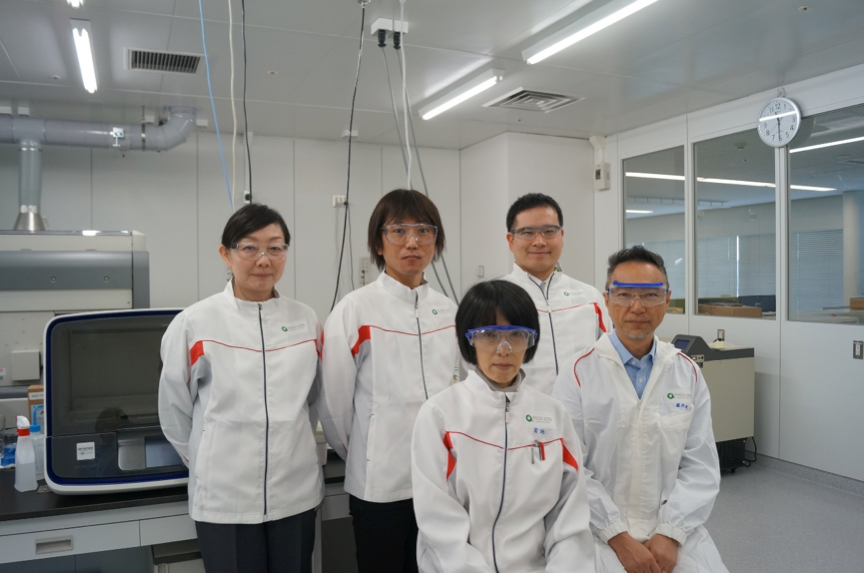
Recent advancements in next-generation sequencing (NGS) technology have contributed to developing a targeted approach for gene expression analysis, providing researchers with speed, scalability, and precision without the need for additional time and costly resources to get from samples to quality insights.
We spoke with Dr. Ryo Fujii, Associate Director at the Japanese pharmaceutical company Axcelead Drug Discovery Partners, Inc., where he leads genomics, transcriptomics, and bioinformatics in the company’s Integrated Biology Group. He uses gene expression analysis techniques with tissue cultures, animal models, and clinical samples as indices for investigating the mechanism of drug action and for confirming pharmacokinetics.
When Dr. Fujii first performed gene expression analyses, he started with real-time PCR assays but felt limited by the gene types available. Now with the Ion AmpliSeq™ Transcriptome Assay, Dr. Fujii says that he is able to use both human and mouse genes, “improving both the quantity and quality of our gene analysis information.”
As little as 10 ng of total RNA required to perform transcriptome analysis
The Ion AmpliSeq Transcriptome Assay is part of an end-to-end NGS workflow solution that enables investigation of over 20,000 human or mouse genes using only a single assay.
Dr. Fujii has relied on this assay for drug development since 2015. “It’s very convenient because the assay requires only 10 ng of total RNA without additional steps required for removal of rRNA,” he explains. He typically uses 96-well plates for his cell cultures and expose the cells to various types of drug candidates at different concentrations. With the Ion AmpliSeq Transcriptome Assay, Dr. Fujii and his team are able to get “more than enough RNA for the transcriptome analysis from a single well.”
Resulting data are reproducible, with a straightforward data analysis workflow
With the Ion Proton™ System, Dr. Fujii’s team is able to easily process 16 samples from two sequencing reactions per day. He has found that the data generated from the Ion AmpliSeq Transcriptome Assay with NGS are reproducible using Applied Biosystems™ TaqMan® Assays. Dr. Fujii recalls a time when he was “using the same positive control sample in different experiments, and the positive control data were so close to the actual data, that I thought I was looking at the wrong data.”
Dr. Fujii has also discovered that “the dynamic range of the Ion AmpliSeq Transcriptome Assay is greater than that of microarray. Because the Ion AmpliSeq Transcriptome Assay sequences one target site per gene, data analysis is simpler due to having a resulting data set smaller when compared to traditional RNA-Seq.” In addition to the simplicity of having a smaller data set that is reproducible, Dr. Fujii’s team can analyze the resulting data easily with optimized plug-in software specifically created for use with this workflow, and access support from the knowledgeable technical support team at Thermo Fisher Scientific to help make data analysis straightforward.
Future applications of transcriptome analysis for drug development
As for future applications of transcriptome analysis, Dr. Fujii believes he may be able to use it to assess off-target effects in oligonucleotide therapeutics. During the development of oligonucleotide drugs, he selects unique sequences from the human genome to form antisense DNA, which interact with the target. However, when the drug is applied to cell or model animals, unexpected off-target effects or disruption of cell signaling pathways occur. According to Dr. Fujii, transcriptome analysis could then, in theory, be used as a tool for “confirmation of off-target effects during early-stage drug development, and provide more efficiency in the development process.”
Accelerate drug development with an integrated drug discovery service
Dr. Fujii believes that successful drug development won’t come from knowledge and understanding in only a single field. Instead, he feels strongly that integration with other related areas is key. Guided by this perspective, the first stage of Axcelead’s integrative service was involved in providing high-throughput screening using the largest compound library in Japan. Because Axcelead Drug Discovery Partners is owned by Takeda Pharmaceutical Company, Dr. Fujii has been able to access a vast amount of drug development data accumulated from across the entire company. Using this approach, Dr. Fujii has been able to quickly identify chemical compounds with desired biological activities in a relatively short time, and with a high success rate.
Using innovative technologies like the Ion AmpliSeq Transcriptome Assay, Dr. Fujii plans to continue in the development of novel approaches within the drug discovery and health care space by leveraging his team’s collective expertise, cultivated through their extensive experience in drug development.
Find out more about targeted human and mouse transcriptome sequencing at thermofisher.com/ampliseqtranscriptome
About Axcelead Drug Discovery Partners Inc.
Axcelead is the first comprehensive integrated drug discovery solutions provider in the pharmaceutical industry in Japan, having succeeded some portion of the drug discovery research department of Takeda Pharmaceutical Company Limited, and started its business in July 2017. Axcelead performs all of the functions related to nonclinical drug discovery research, drawing on the scientific powerhouse of their staff’s expertise in a range of therapeutic areas at Takeda. Axcelead offers a one-stop shop for research services with a comprehensive set of best-in-class capabilities that meet a range of customer needs to bridge basic and applied clinical research—from exploratory research to optimizing compounds.
Leave a Reply